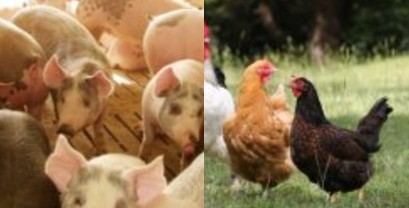Agriculture Secretary Brooke Rollins on Monday announced USDA will extend waivers to allow faster line speeds at pork and poultry industry, describing the actions as efforts to reduce burdens on the industries by getting rid of outdated requirements.
“America leads the world in pork and poultry production, and we are committed to ensuring our producers remain competitive on a global scale without being held back by unnecessary bureaucracy,” Rollins said in a news release. “Under President Trump’s leadership, we are cutting unnecessary red tape, empowering businesses to operate more efficiently, and strengthening American agriculture — all while upholding the highest food safety standards.”
The directive instructs the Food Safety and Inspection Service (FSIS) to allow faster line speeds at pork and poultry processing facilities, “ensuring they can meet demand without excessive government interference,” USDA stated. USDA will begin immediate rulemaking to increase line speeds at processing plants. FSIS also will not require processors to submit more workplace safety data. “Additionally, FSIS will no longer require plants to submit redundant worker safety data,” as extensive research has confirmed no direct link between processing speeds and workplace injuries,” USDA stated. “These reforms will strengthen U.S. food production, reduce costs for producers, and support a more resilient supply chain.”
The National Pork Producers Council (NPPC) noted the group has advocated for faster line speeds since 2019. FSIS permitted six pork plants to increase line speeds starting in November 2021 and extended that trial multiple times through Jan. 15, 2025. FSIS released a study of the plants concluding that line speeds were not the leading factor in “worker musculoskeletal disorder (MSD)” risk at these plants, NPPC stated.
“America’s pork producers thank U.S. Agriculture Secretary Brooke Rollins and the Food Safety and Inspection Service (FSIS) for this needed action that will provide financial security and more stability for pork producers,” said NPPC President Duane Stateler, a pork producer from McComb, Ohio. “Without this program, some pork producers could have incurred an additional loss of nearly $10 a head.”
The National Chicken Council (NCC) noted a pilot program using almost two dozen chicken processing plants was initiated under the Clinton administration allowing line speeds of up to 175 birds per minute (bpm). The group cited that part of the processing line (evisceration) that deals with the speed increase is almost entirely automated. This modernized system has been studied, debated, and reviewed in depth for two and a half decades to assure its effectiveness in further modernizing chicken inspection while improving food safety and protecting workers. Research has confirmed that higher evisceration line speeds in chicken processing plants do not lead to increased food safety risk, NCC stated.
“I want to thank Secretary Rollins and the Trump administration for adhering to science-based principles and following 25 years of experience, studies and data on increased line speeds in chicken processing plants,” said National Chicken Council President Harrison Kircher. “The current approach has created significant uncertainty for companies with waivers and a competitive disadvantage for those without them. We appreciate the administration moving to ensure a level playing field and help increase the global competitiveness of the U.S. broiler industry. We look forward to providing input as the rulemaking process begins and request that the agency work expeditiously to finalize a rule.”
###
DTN


